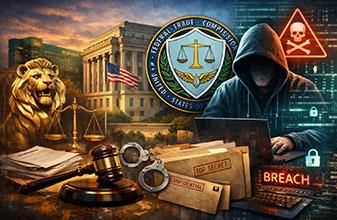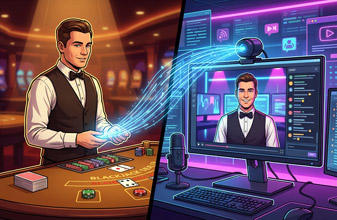Becoming a Kinesic

If you are sensitive, then you can become a kinesic, and you can use your kinesic skill to win at blackjack if you can find dealers who look at hole cards under 10s. There aren’t many casinos anymore that don’t use devices that prevent the dealer from being able to know the specific value of the card, but there are still some that have the dealers perform this function manually. If you can find these casinos, the results can be rewarding.
What is being discussed here is under-standing and using the body language signals that are sent out by the blackjack dealer. This is a skill that poker players try to develop. An expert poker player always seems to fold whenever you have a good hand in spite of your best attempts to hide its value. That expert poker player is sensitive to your body language and knows the value of your hand just as surely as if your cards were face up. You can develop your own sensitivity and win money by reading the body language of the blackjack dealer.
A word of caution is in order here: Prearranging a set of signals with a dealer is cheating. It can get the dealer fired and may cause you to be barred for life from playing in any casino in the state. Both you and the dealer can be prosecuted if the casino wants to press charges. You might find yourself facing a large fine and years in prison. Most pit personnel dislike skillful players, but all pit personnel are downright hostile to cheaters. It is perfectly legal to be alert and sensitive. It is also legal to use all information freely available so long as you do not cause it to be available. Winning as a kinesic is not illegal, just as winning with card counting is not illegal.
How to Spot a Tell
Walk around without playing and check out the dealers. Finding tells is easier for a spectator than for a player. The spectator can pay 100% attention to the dealer and not worry about pit bosses, other customers, or the cards. A spectator need not get caught up in the play of the hands and does not have to make sure that the dealer pays off correctly. An alternative is to play for small stakes and use basic strategy while you are sizing up the dealer. When you think that you have discovered a tell, then increase the size of your bet. Body language of the unintentional type signals an emotional message, and the word “emotional” is important. The dealer who feels emotional involvement in the outcome of the hand is likely to show this emotion upon checking the hole card. A dealer who is not emotionally involved in the game will not unintentionally tip off the hole card with body language. To get the advantage of tells, avoid dealers who do not care whether anyone wins or loses.
The dealer who wants you to hit might signal you by holding the pack close to your cards (in a hand-held game), or by putting a hand on the table close to your cards. This tell may well be intentional. To use this tell, you must first decide whether the dealer is rooting for you or against you. A common situation is for the dealer to root for you for the first few hands to encourage a toke, and then turn against you if you are not toking whatever the dealer deems to be appropriate.
The Dealer Likes You
The dealer who wants you to win is likely to yield useful information. Friendly dealers are more likely to tell with eye and hand signals. Sometimes a friendly dealer will respond to a direct question. Show a pair of eights to a friendly dealer with 10 up and pause; a smile from the dealer says split and a frown says hit.
If you really want to be bold and no pit boss is watching, say “Shall I split them?” and wait for a yes or no. Do not overuse this friendly-dealer trick because pit bosses tend to view such goings-on as cheating. Customers do get kicked out for asking the dealer for hole-card information.
Do not play too quickly when the dealer shows 10. Give the dealer a chance to show an emotional reaction. You do not have to show your cards to the dealer — your pause tells the dealer that you are considering how to play a stiff. One friendly dealer I found was telling with her stance, but I had to pause long enough for her unconscious reaction to take place. I sat at first base. If the dealer was pat she would remain facing me directly throughout the pause. If she was stiff she would gradually turn toward the next player. So I knew whether to hit or stand by waiting and watching whether her body turned.
The Dealer Does Not Like You
Once when I was playing blackjack in Las Vegas, a large man wearing an excessive amount of gold and diamonds sat down at first base. The dealer must have disliked him intensely, because her body language advised him to play his hand wrong every time she had a 10 up. When she was stiff, she encouraged him to hit; when she was pat she encouraged him to stand. I played my hand opposite of what her body language was saying to him.
Tension
The dealer who is rooting against you is also likely to yield useful information. The dealer who craves to win is likely to tense with a stiff and relax with a pat hand. The same is true if big money is at stake. You may be able to read the dealer’s hand as stiff or pat if you can learn to distinguish dealer tension from dealer relaxation.
Select a dealer who seems nervous and involved in the game. Watch that dealer for a while to establish a base behavior pattern. Look for ways that the dealer differs from this base when checking the hole card under a 10. Does the line defining the jaw become more definite, indicating tension? Where are the dealer’s hands? What gestures do the hands make? Where is the dealer looking? Look for a gum chewer and see if the jaws speed up or slow down or stop completely when the hole card is checked.
Other signs of tension are: avoiding eye contact, rigid posture, rocking or shifting the body, clearing the throat, tapping fingers, withdrawing the chin into the chest, hunching the shoulders, perspiring, hands shaking, lowering of both eyebrows, and squinting with a pout.
Pupils
The pupils of the eyes widen when the brain detects something pleasing. Unfortunately, this information is almost useless to a blackjack player. The reason is that the lights in a casino are in the ceiling, and the dealer’s head is above your head; this means that the dealer’s face is in a shadow. You will probably be unable to see the dealer’s eyes, let alone gauge the size of the pupils.
Looking up at the dealer’s face is an unnatural thing for you to do anyway — most blackjack players gaze at their cards and the dealer’s cards. The only part of the dealer most players notice is the manicure. However, if you can somehow see the dealer’s pupils, watch for expansion if the dealer is satisfied or contraction if the dealer dislikes the hand. Any reaction will probably occur as soon as the dealer checks the hole card. Pupillary response is a sign of tension or relaxation: Small is tension, big is Relaxation.
Encouraging tells
Experiment a bit. See what works best with your own personality and natural style. Try being friendly and see if that encourages tells. Try being angry. Or ominous. Or try a drunk act. Since the tell is an emotional reaction on the dealer’s part, anything you can do to get the dealer emotionally involved in the outcome of the game is likely to lead to tells. The dealer who does not care whether you win or lose is not likely to subconsciously tip off the hole card.
Inadvertently Discouraging a Tell
One time I spotted a dealer in Las Vegas who made a fist of his right hand if he was stiff and put the hand flat on the table if he was pat. This tell was particularly easy to remember — flat is pat. This dealer also made a fist if his upcard was 2, 3, 4, 5, or 6 and kept his hand flat for 7, 8, or 9 up. I played for twenty minutes with perfect information; never once did the dealer fail to accurately disclose his hole card when the upcard was 10. Then, remembering Ian Andersen’s advice about rewarding all tells, I bet $5 for the dealer.
That toke turned out to be a mistake, because from then on the dealer’s right hand was always flat on the table. I knew that something was wrong on the next hand when the upcard was 5 and yet his hand was flat. Perhaps the toke stilled the dealer’s competitiveness and made him relax. The clenched fist, a sign of stress, occurred no more. By rewarding the tell with a toke I destroyed the attitude that caused the tell. Apparently feeding the goose that lays golden eggs can kill it.
Tells On the Upcard
Observation of the “flat is pat” dealer suggests looking for a tell by comparison of the dealer’s reactions with the upcard. Instead of looking for tells on four hands out of thirteen, you can look for tells on twelve out of thirteen. The dealer’s emotional reactions might well be the same with 4 up as with 10 up and 4 in the hole; each hand must be hit and is likely to bust. An upcard of 3 might cause the same emotional reaction as 10 up and 3 in the hole. You can more quickly understand the body-language vocabulary of a dealer who responds emotionally to the upcard.
Intelligence of the Dealer
Most blackjack dealers are reasonably intelligent, but brighter dealers are less likely to tell. Some dealers are very bright; do not waste your time studying them.
Look for dealers who are intelligent enough to add to twenty-one and find the larger of two numbers, but not bright enough to conceal their emotions. Try to sit at third base against such a dealer. Watch the dealer’s reactions to the other players and their hands. Even if you do not spot a pattern, you may catch an occasional slip if you are alert.
Playing Strategy for Tells
Reading the dealer will make you no money unless you know how to use the information you have gained. This section tells how to use this information. A conservative approach is recommended because you must not alert pit bosses to the fact that you have information that they do not want you to have. If a pit boss suspects that you are reading a particular dealer: You will soon find a different dealer at your table, and yourself watched closely. Pit bosses do not like people who get an edge with kinesics any more than they like card counters.
Playing strategy against a dealer who is stiff and playing strategy against a dealer who is pat are discussed individually. My recommendation for conservative use of tells is shown in table 117 of the e-book version of Professional Blackjack.
Excerpted with permission from the e-book version of Professional Blackjack by Stanford Wong.











Please log in or register to leave a comment